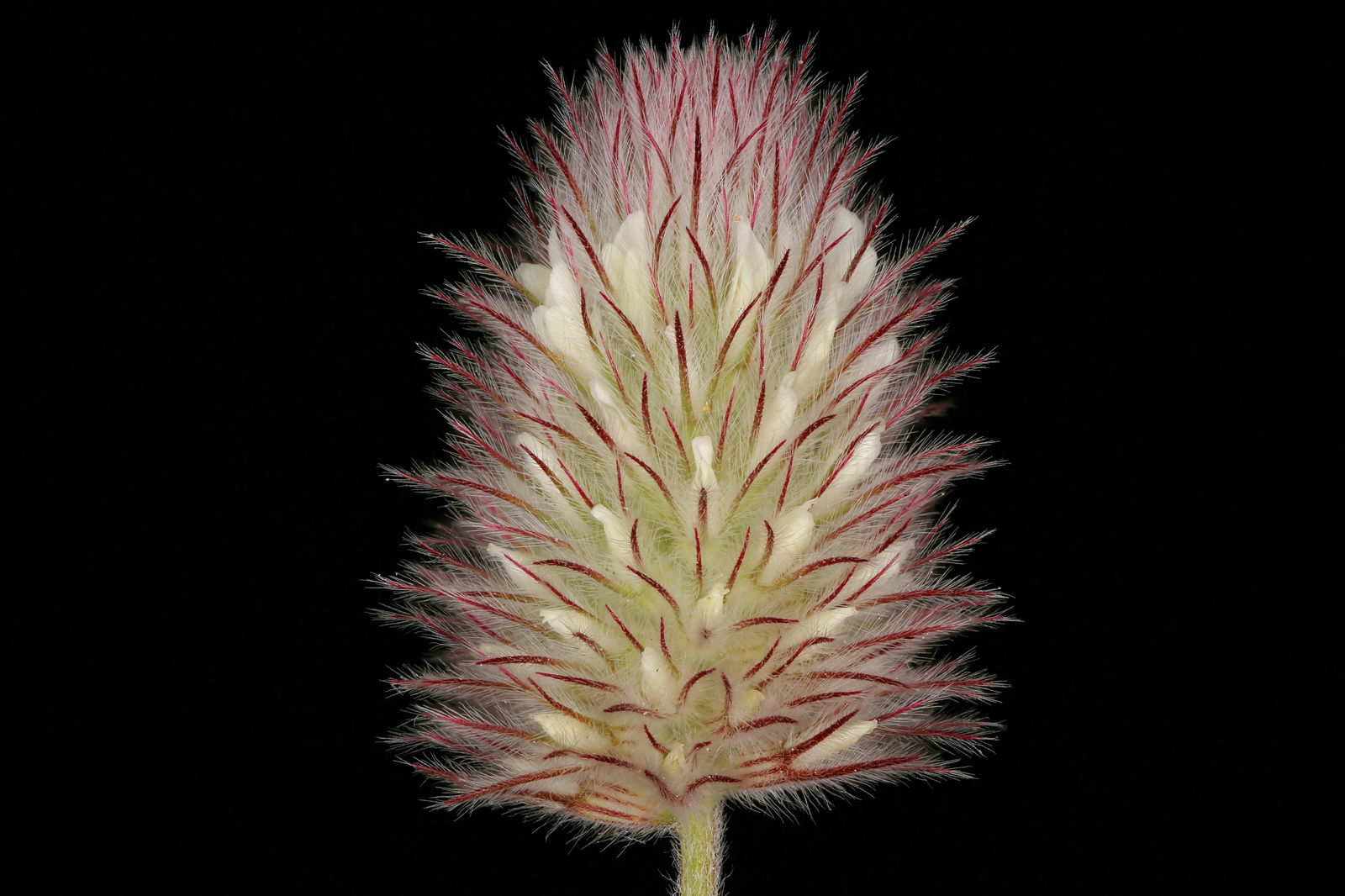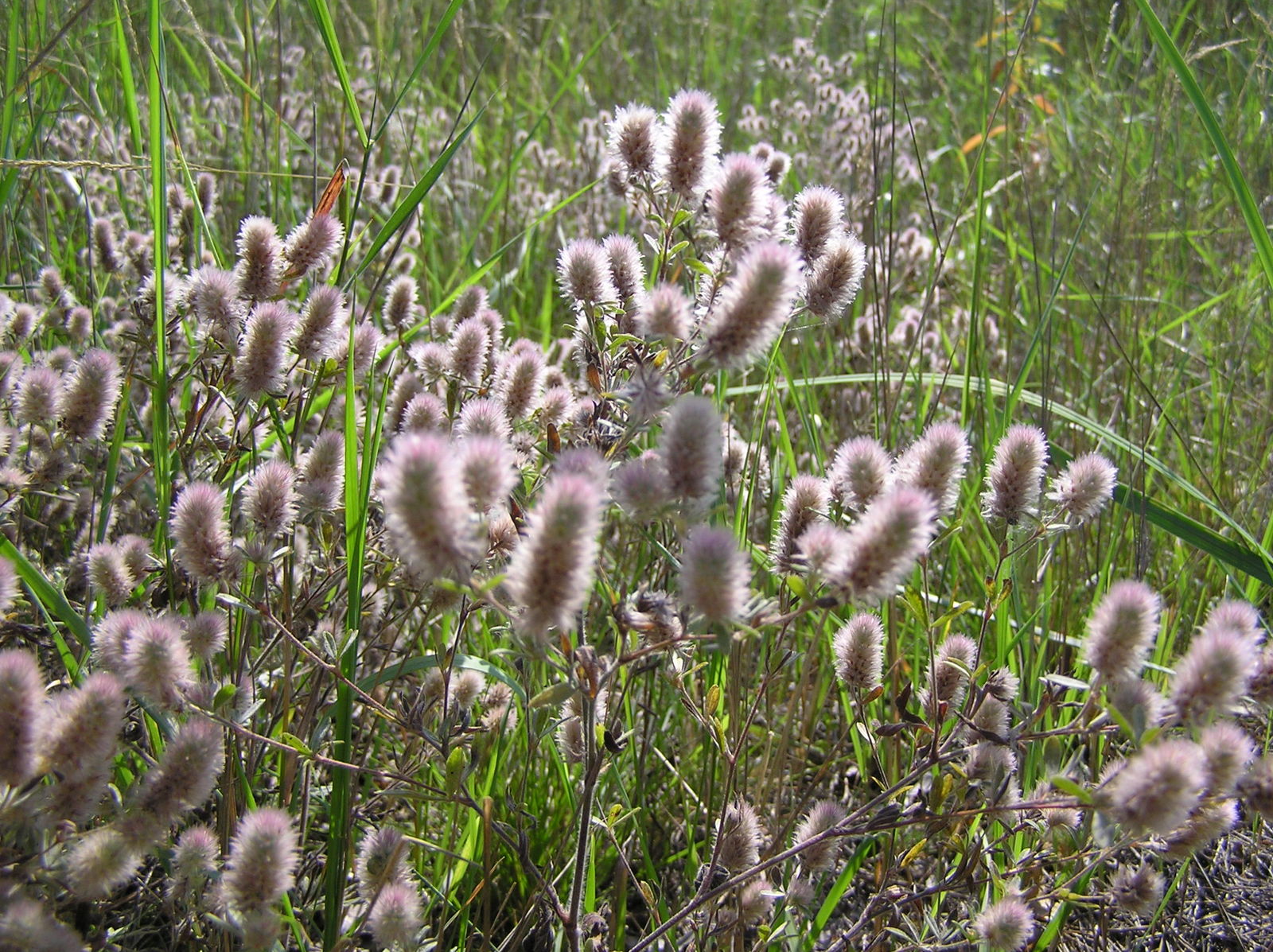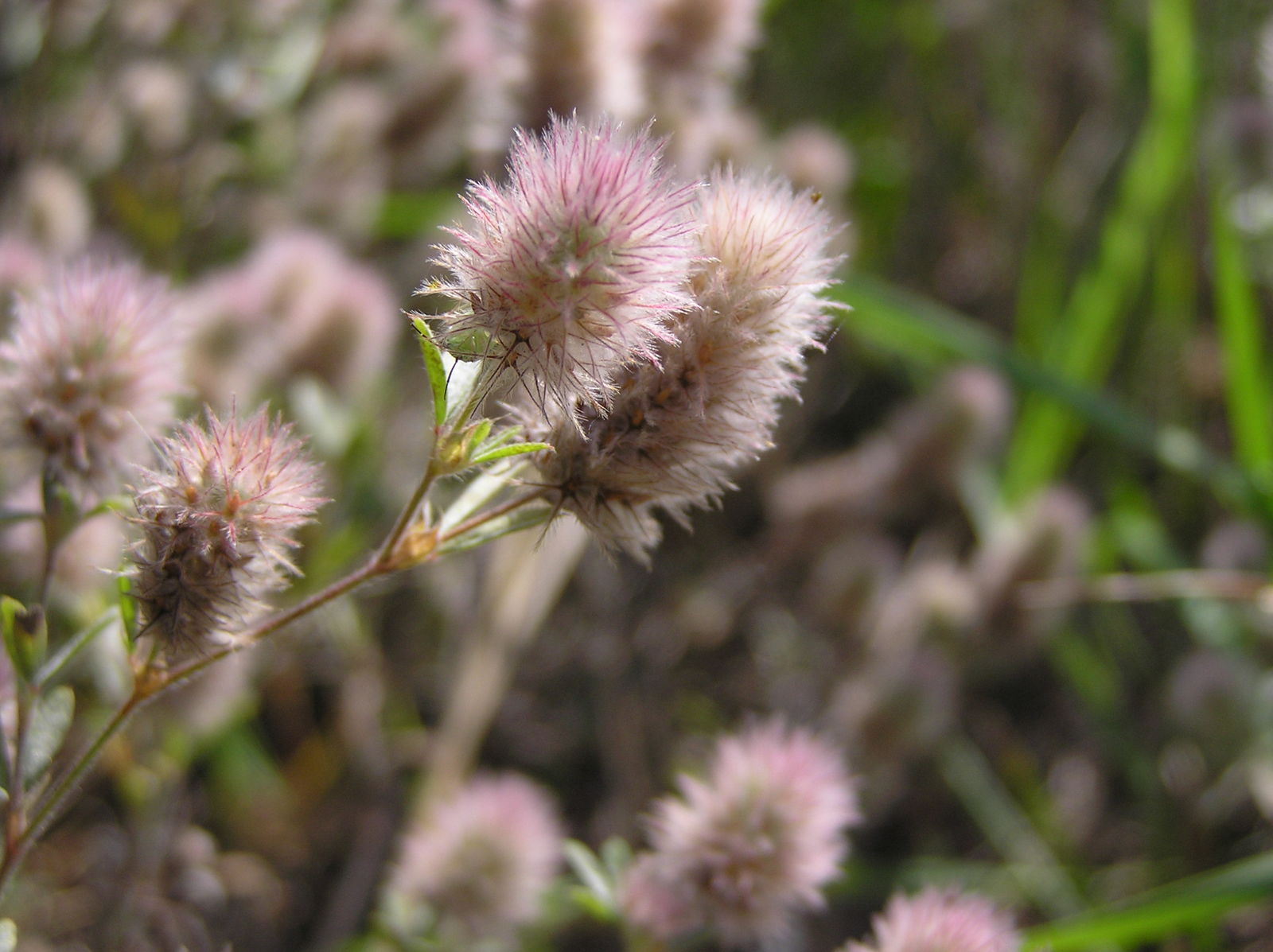Hare's-foot Clover
trifolium arvense
Also known as: ["Rabbit's-foot Clover","Pineapple Clover"]
Overview
A small, delicate annual clover with soft, silvery hairs on its leaves and stems, producing small pinkish-white flowers.
Benefits & Perks
["wildlife attractant (bees, butterflies, birds)","drought tolerant","low maintenance"]
Botanical Classification
| Phylum: | Magnoliophyta |
| Class: | Magnoliopsida |
| Order: | Fabales |
| Family: | Fabaceae |
| Genus: | Trifolium |
| Botanical Name: | Trifolium arvense |
Plant Characteristics
Basic Information
- Category: Herbs & Weeds
- Suitable Location: outdoor garden bed in full sun
- Suitable For:
- Is Weed: No
- Allergenicity: low
Environmental Needs
- Climate: {"temperatureRange":"5–30°C"}
- Hardiness: {"zones":"5–9"}
- Misting: rarely required, only if grown in very dry indoor conditions
- Drainage: Fast-draining to prevent root rot.
- Soil Type: Well-draining, sandy loam with some organic matter.
Maintenance Level
- Maintenance Level: very low
- Toughness Level: high
- Pruning Frequency: As needed, typically after flowering or in early spring.
- Pruning Intensity: Light to moderate, removing only dead or overgrown stems.
Care Details
Ideal Sunlight Coverage:
Full sun (6–8 hours of direct sunlight daily). Tolerates partial shade but may produce fewer flowers.
Sunlight Tolerance Tips:
Acclimate plants gradually to intense sunlight if moved from shade; protect from harsh midday sun in hot climates; ensure good air circulation to prevent fungal issues.
Care Requirements
Care Difficulty
very easyeasy
Sunlight
full sun
Rotate plants weekly for even growth; use sheer curtains to filter intense light indoors; avoid placing in drafty areas.
Watering
every 7–10 days during active growth, less frequently in winter
Water thoroughly but infrequently to encourage deep root growth; ensure soil dries slightly between waterings; avoid waterlogging.
Soil
well-drained, sandy or loamy soil
pH: Slightly acidic to neutral (pH 6.0–7.0).
Avoid heavy clay soils; test soil pH annually; amend with organic matter before planting.
Temperature
Prefers cool to moderate temperatures (60–75°F or 15–24°C). Tolerates light frosts but may struggle in extreme heat.
Monitor temperature fluctuations; adjust watering in extreme heat or cold; protect from sudden temperature drops.
Fertilizing
rarely required, if used then every 3 months with a balanced, diluted fertilizer
Apply fertilizer after watering to prevent root burn; use organic options like compost tea for gentle feeding; stop fertilizing when plants are dormant.
Propagation
Methods
Stem cuttings or seed. Seeds are the most reliable method for home growers.
Step-by-Step Propagation Guide
- Prepare medium.
- Sow seeds or take cuttings.
- Maintain moisture and humidity.
- Transplant once rooted.
Best Time: Spring or early summer when the plant is actively growing.
Environment
Warm (65–75°F or 18–24°C), high humidity (70–80%), and bright indirect light.
Medium
Well-draining seed starting mix or a mix of peat and perlite.
Hormone
Not necessary for seeds; optional for stem cuttings to encourage rooting.
Timeline
Seeds germinate in 1–3 weeks; stem cuttings root in 2–4 weeks and establish in 1–2 months.
Tools Needed
Seed trays, rooting hormone (optional), misting bottle, heat mat (optional), pruners.
Quick Tips
Use bottom heat for faster germination; keep soil consistently moist but not waterlogged; thin seedlings to prevent overcrowding.
Pruning & Repotting
Pruning Guide
Method
Snip stems just above a leaf node or lateral branch to encourage bushier growth.
Pruning Plan
Minimal pruning required. Focus on removing dead or damaged stems to maintain plant health and appearance.
Tools
Pruning shears, clean scissors, gloves.
Checklist
Disinfect tools before use; prune in dry conditions; remove only necessary stems; avoid cutting into old wood.
Repotting Guide
Best Season
Early spring before new growth begins.
Pot Size
Choose a pot one size larger (1–2 inches in diameter) than the current one.
Method
Gently remove the plant, trim any circling roots, place in a new pot with fresh soil, and water lightly.
Suggestions
Repot only if the plant becomes root-bound or outgrows its container. Generally, every 2–3 years is sufficient.
Checklist
Select appropriate pot size; prepare fresh soil mix; trim roots if necessary; water after repotting.
Advanced Care Tips
Watering Mastery
Watering Checklist
Check soil moisture before watering; water early morning or late evening; ensure proper drainage; avoid overhead watering.
How to Apply Water Properly
Water at the base of the plant, ensuring moisture reaches the root zone without wetting foliage. Apply until water drains from the bottom, then allow the soil to dry before the next watering.
Watering Schedule Tips
Water deeply once every 7–10 days during active growth, reducing frequency to every 2–3 weeks in winter. Adjust based on rainfall and soil moisture retention.
Soil Improvement
Add perlite or coarse sand to improve drainage; incorporate compost for fertility; ensure soil is loose and airy.
Temperature Stress Management
Signs of Temperature Issues
Wilting, yellowing leaves, stunted growth, or flower bud drop in excessive heat; leaf discoloration or dieback in prolonged cold.
Cold Stress
Low temperatures slow growth and may cause leaf damage or dieback if prolonged below freezing.
Solution: Provide frost protection with row covers or mulch; avoid overwatering in cold conditions; choose sheltered planting sites.
Hot Stress
Excessive heat can lead to wilting, leaf scorch, and reduced flowering.
Solution: Provide afternoon shade in hot climates; increase watering frequency; use mulch to retain soil moisture.
Fertilizing Guide
Fertilizing Checklist
Check fertilizer label for NPK ratio; dilute correctly; apply to moist soil; avoid contact with foliage.
Fertilizing Method
Use a balanced, water-soluble fertilizer diluted to half strength every 4–6 weeks during active growth. Avoid fertilizing in winter.
Common Problems & Solutions
Toxicity Warning
Cats
Non-toxicTrifolium arvense is not toxic to cats. There are no documented adverse effects associated with ingestion of this plant by felines.
⚡ Toxic If:
if eaten
Dogs
Non-toxicTrifolium arvense is not toxic to dogs. There are no documented adverse effects associated with ingestion of this plant by canines.
⚡ Toxic If:
if eaten
Humans
Non-toxicTrifolium arvense, commonly known as rabbitfoot clover, is not considered toxic to humans. It has no known adverse physiological effects when ingested in typical quantities.
⚡ Toxic If:
if eaten
Frequently Asked Questions
Q: Is Trifolium arvense toxic to pets?
A: No, it is non-toxic to dogs and cats.
Q: Does Hare's-foot Clover attract wildlife?
A: Yes, it attracts bees, butterflies, and birds.
Q: How easy is it to grow?
A: It is very easy to grow, requiring minimal maintenance.
Quick Reference
| Family: | Fabaceae |
| Care: | very easy |
| Light: | full sun |
| Water: | every 7–10 days during activ |
Get Expert Care Tips
Download the Plantious app for personalized care reminders and plant identification!
Google Play App Store








